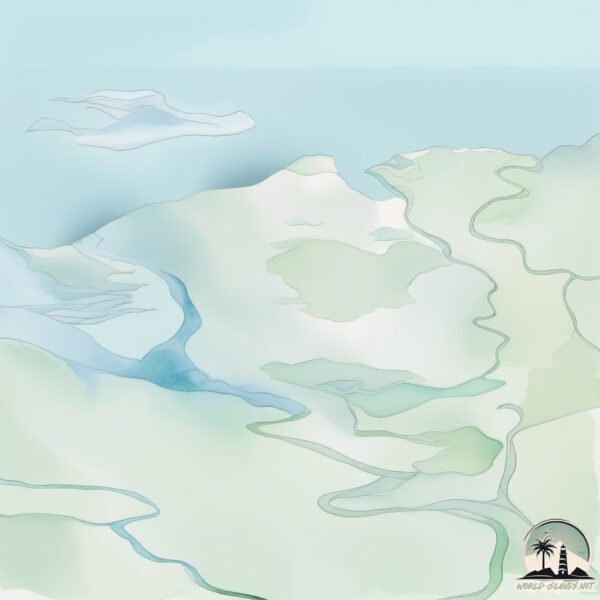Welcome to Kendall , a Polar island in the Beaufort Sea, part of the majestic Arctic Ocean. This guide offers a comprehensive overview of what makes Kendall unique – from its geography and climate to its population, infrastructure, and beyond. Dive into the details:
Geography and size of Kendall
Size: 231.4 km²Coastline: 457.9 kmOcean: Arctic OceanSea: Beaufort SeaContinent: North America
Kendall is a Large Island spanning 231 km² with a coastline of 458 km.
Archipel: –
Tectonic Plate: North America – Covers North America and parts of the Atlantic and Arctic Oceans, characterized by diverse geological features and varying levels of seismic activity.
The geographic heart of the island is pinpointed at these coordinates:
Climate and weather of Kendall
Climate Zone: PolarClimate Details: TundraTemperature: Cold
Climate Characteristics: The tundra climate features long, extremely cold winters and short, cool summers. Vegetation is limited to mosses, lichens, and small shrubs due to the low temperatures and short growing seasons. Biodiversity is low, but some specialized species thrive.
Topography and nature of Kendall
Timezone: UTC-07:00Timezone places: America/DenverMax. Elevation: 20 m Mean Elevation: -4 mVegetation: Herbaceous CoverTree Coverage: 78%
The mean elevation is -4 m. The highest elevation on the island reaches approximately 20 meters above sea level. The island is characterized by Plains: Flat, low-lying lands characterized by a maximum elevation of up to 200 meters. On islands, plains are typically coastal lowlands or central flat areas.
Dominating Vegetation: Herbaceous Cover
Vegetation: 5 vegetation zones – Highly Diverse Island
Infrastructure and Travelling to Kendall
Does the island have a public airport? no .
Does the island have a major port? no .
The mean population of Kendall is 0 per km². Kendall is Uninhabited. The island belongs to Canada .
Continuing your journey, Niglintgak is the next notable island, situated merely km away.
Q&A w/ Kendall Washington
I answer questions asked from the fans during this Q&A. Regarding Love Island, Mental health, and what's next for me.
Q&A w/ Kendall Washington
I answer questions asked from the fans during this Q&A. Regarding Love ...
I answer questions asked from the fans during this Q&A. Regarding Love Island, Mental health, and what's next for me.
KENDALL SPILLS THE TEA ON HIS NEW RELATIONSHIP | BLND MMNTS Podcast
We're dropping EPISODE 1 of our new podcast!!! Thank you Kendall for ...
We're dropping EPISODE 1 of our new podcast!!! Thank you Kendall for being our first guest!!! Today Kendall open up about his ...
‘Love Island USA’ star Kendall Washington addresses ‘unfortunate’ private video leak after finale
Kendall Washington is addressing a “private” video that leaked online ...
Kendall Washington is addressing a “private” video that leaked online while he was in Fiji filming “Love Island USA” Season 6.
Canada is classified as Developed region: G7: Group of Seven – Major advanced economies, including Canada, France, Germany, Italy, Japan, the United Kingdom, and the United States. The level of income is High income: OECD.
News – Latest Updates and Headlines from Kendall
Stay informed with the most recent news and important headlines from Kendall. Here’s a roundup of the latest developments.
Loading...
Please note: The data used here has been primarily extracted from satellite readings. Deviations from exact values may occur, particularly regarding the height of elevations and population density. Land area and coastline measurements refer to average values at mean high tide.

